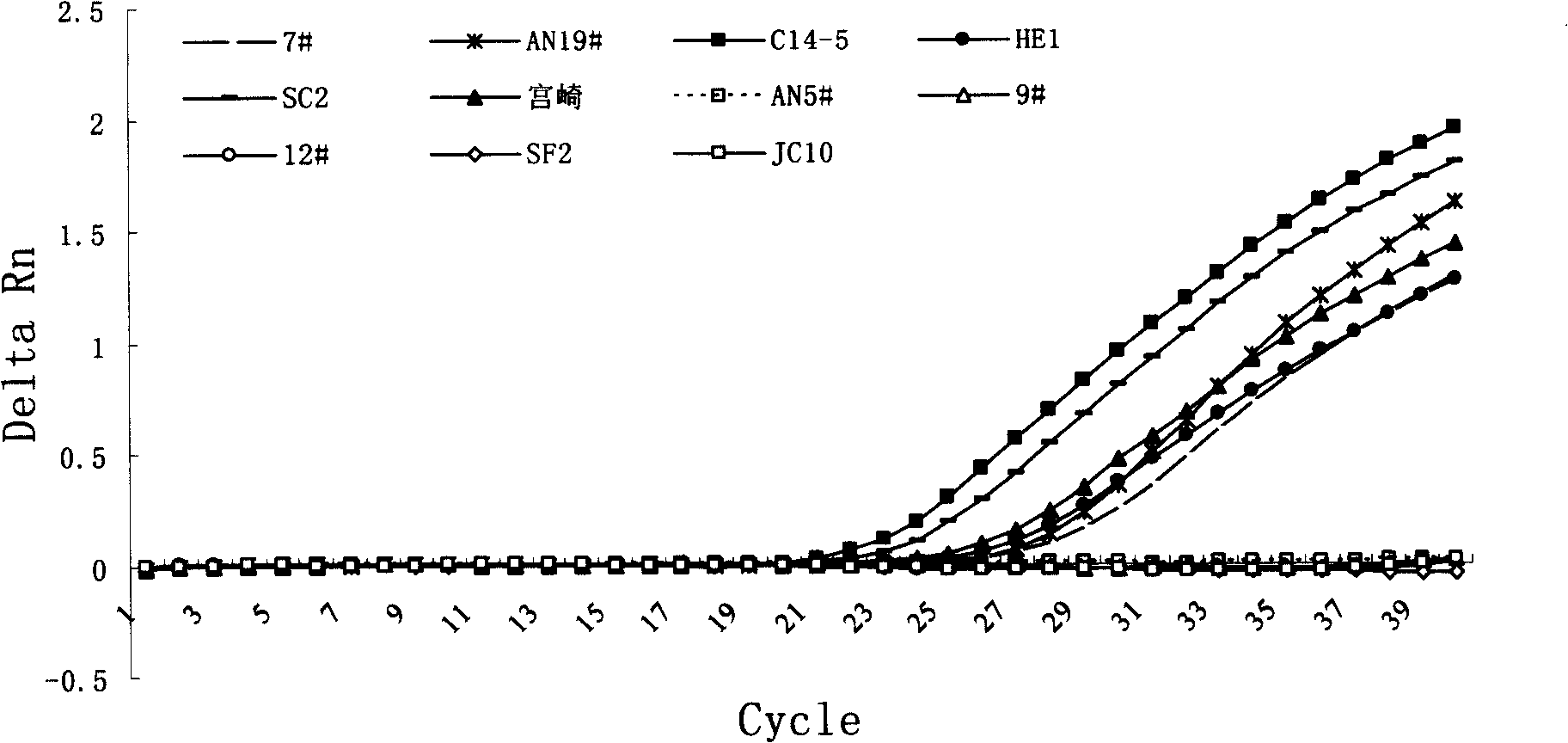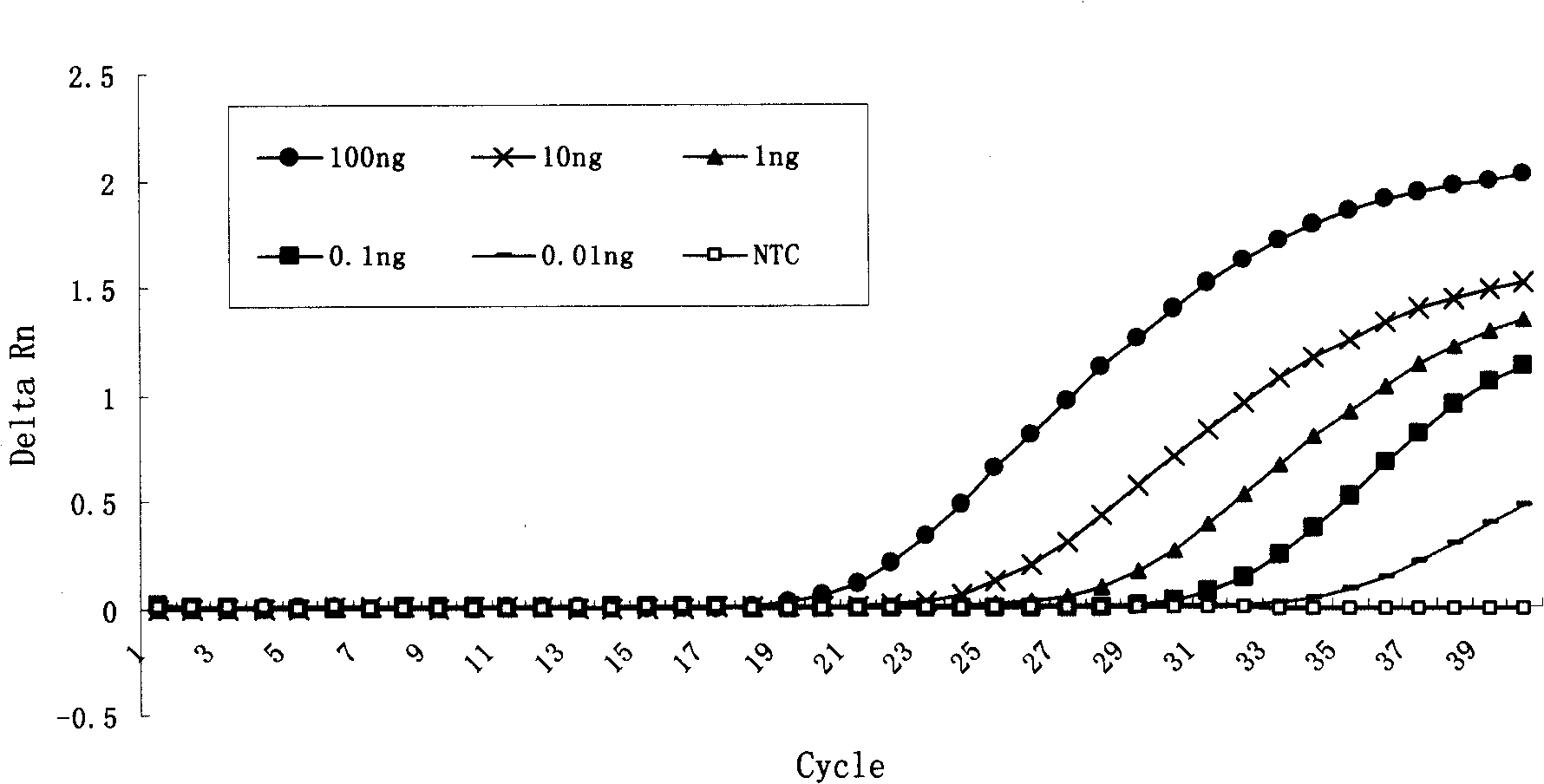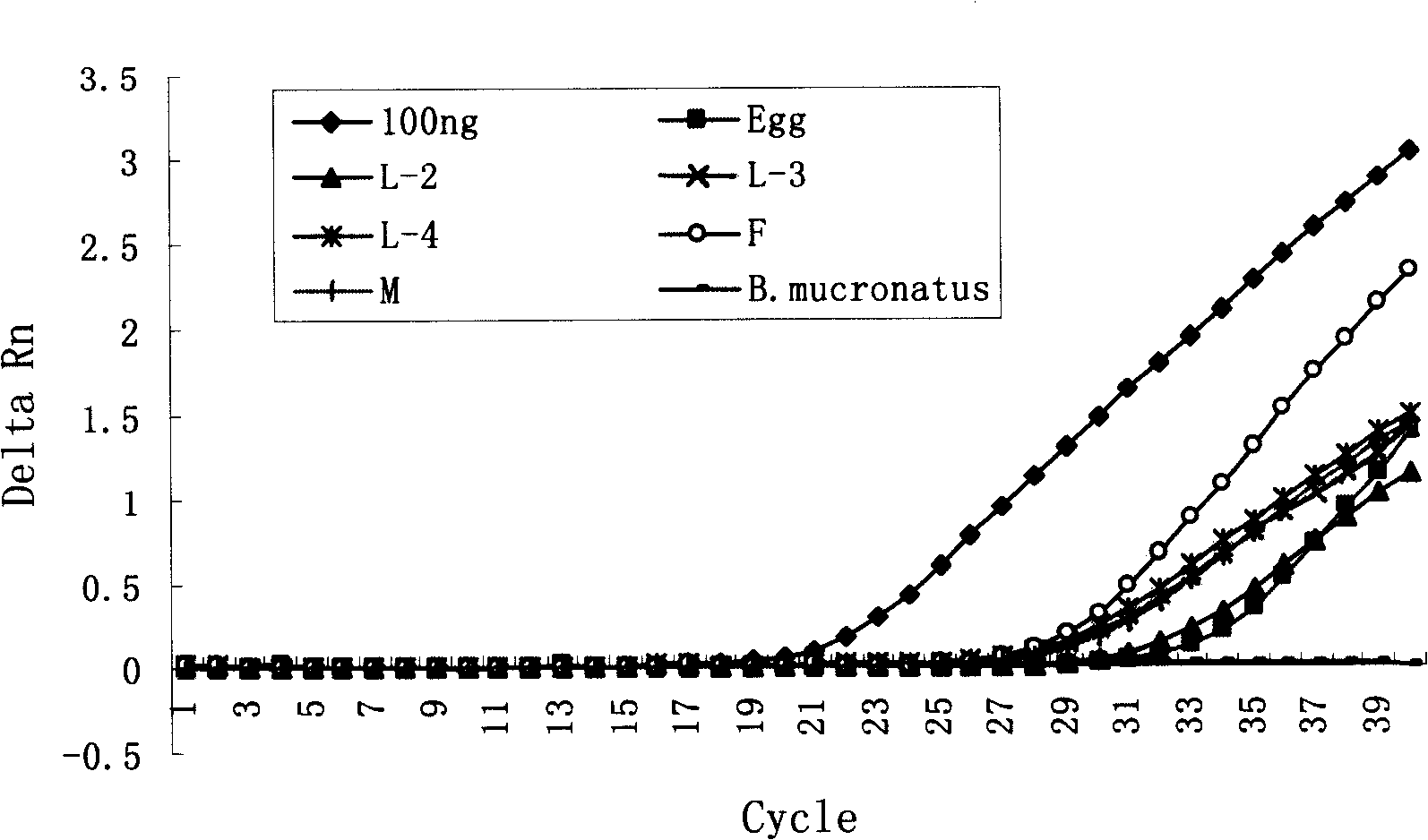Kit for detecting pine beam nematode and detecting process thereof
A detection kit and technology for pine xylophilus, applied in biochemical equipment and methods, material stimulation analysis, microbial measurement/inspection, etc., can solve the problems of many experimental links, many instruments and equipment, complex sample processing, etc., and achieve the goal of overcoming Complicated, time-consuming and highly technical effects
- Summary
- Abstract
- Description
- Claims
- Application Information
AI Technical Summary
Problems solved by technology
Method used
Image
Examples
Embodiment 1
[0026] Example 1: Design of primers and probes
[0027] The invention obtains the Topoisomerase gene fragment specifically expressed in the pine wood nematode on the basis of constructing the suppression subtractive hybridization of the pine wood nematode and the pine wood nematode pseudo.
[0028] ACACTGAAGACTTTTAAGAACCGCGAAATGAGAATAAAGACAGCGCGCTG TGGCCCT ATATTTCATCGACAA GCTGGCTCTGAGAGCGGGAAATGAGAA AAAAGTGGACAGGCT CAAGGA ACAGCTGAAGAGGCTGAAGATTCAAAGAACGGATAAGGACGAAAACAAACAAATCGCTCTCGGCACCTCCAAACTCAACT
[0029] Design primers XC64F (5'TGGCC CTATA TTTCA TCGAC AA3') and XC64R (5'TCCTT GAGCC TGTCC ACTTT T3') according to the above sequence, and use the primers to amplify the genomic DNA of B. xylophilus to obtain the intron of the gene , the sequence is as follows:
[0030]TGGCCCTATATTTCATCGACAAGCTGGCTCTGAGAGCGGGAAATGAGAAAGATACGGACGAAGCGGCCGATACTGTGGGTTGTTGCTCGCTGAGATGCGAACATGTCACTTTGAACGAGGAATTGGACGGAAAAAAGTAGGAATTTTGGCTTAAAGTCATCTATTTTATATTGATTTAGGCATATGTTTTTGATATAAAAAA...
Embodiment 2
[0033] Embodiment 2: detection of pine wood nematode
[0034] 1. Nematode DNA extraction
[0035] Separately collected nematode samples (see Table 1) were placed in 20uL nematode lysate (50mM KCl, 10mM Tris.Cl, pH 8.3, 2.5mM MgCl 2 , 0.45% (v / v) NP40, 0.45% (v / v) Tween 20, 80μg / mL Proteinase K), treated at 65°C for 1h, 95°C for 10min, centrifuged at 16,000g for 1min, and took 2.5μL of supernatant for Real-time PCR detection.
[0036] 2. Real-time PCR detection
[0037] In a real-time fluorescent PCR reaction tube, add 5 μL Taqman 2×PCR Master Mix (Applied Biosystems), 0.5 μL TOPO-F (10 μmol), 0.5 μL TOPO-R (10 μmol), 0.5 μL TOPO-PB (10 μmol), 2.5 μL Serum template, 1uL deionized water.
[0038] The reaction mixture was placed on the reaction well of a real-time fluorescent 7500 PCR instrument (Applied Biosystems), and the PCR reaction was carried out according to the following procedures: 50°C for 2min, 95°C for 10min, entering a cycle of 95°C for 15s, 55°C for 33s, and 72...
PUM
 Login to View More
Login to View More Abstract
Description
Claims
Application Information
 Login to View More
Login to View More - R&D
- Intellectual Property
- Life Sciences
- Materials
- Tech Scout
- Unparalleled Data Quality
- Higher Quality Content
- 60% Fewer Hallucinations
Browse by: Latest US Patents, China's latest patents, Technical Efficacy Thesaurus, Application Domain, Technology Topic, Popular Technical Reports.
© 2025 PatSnap. All rights reserved.Legal|Privacy policy|Modern Slavery Act Transparency Statement|Sitemap|About US| Contact US: help@patsnap.com



